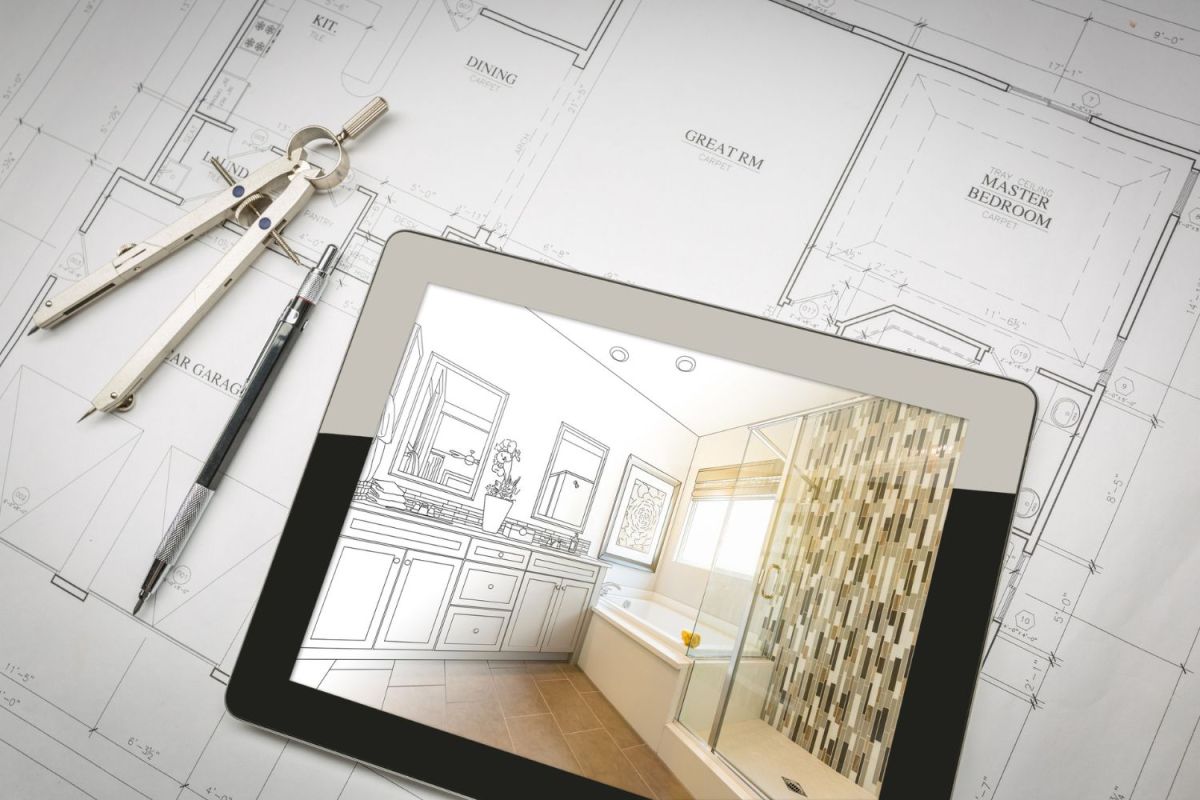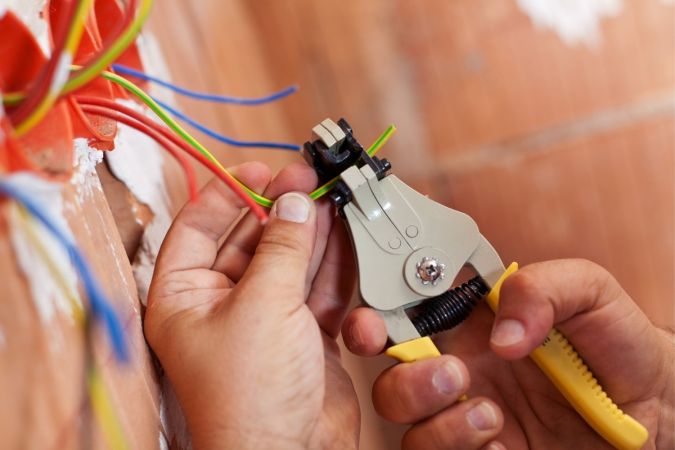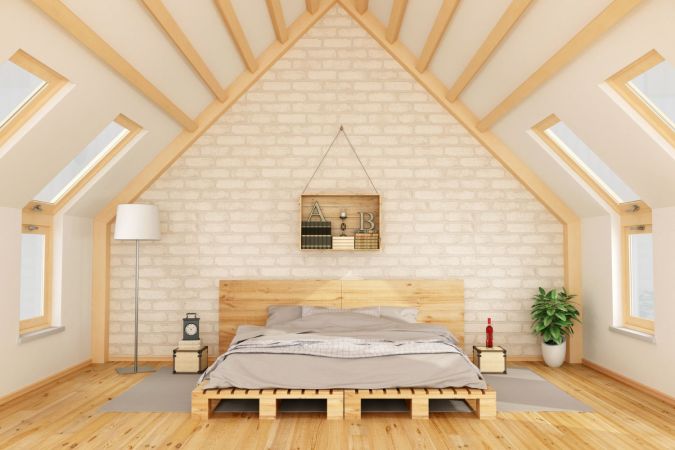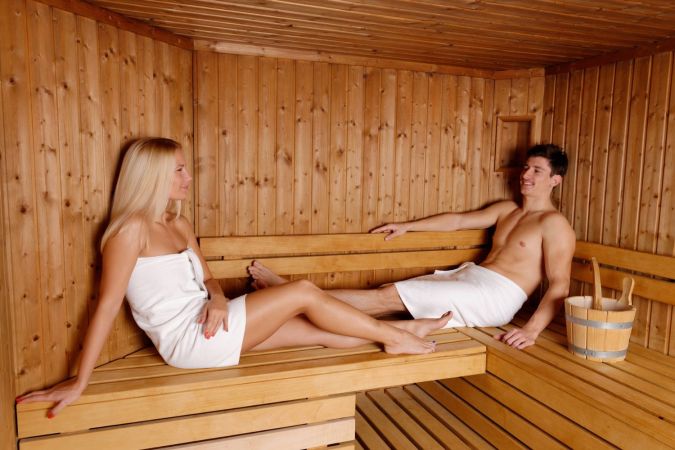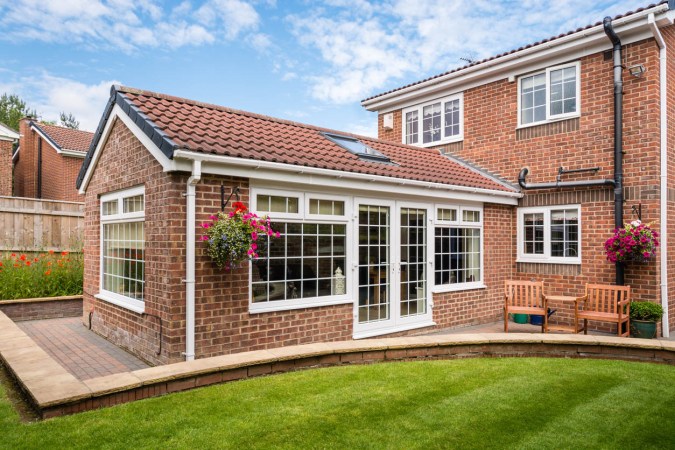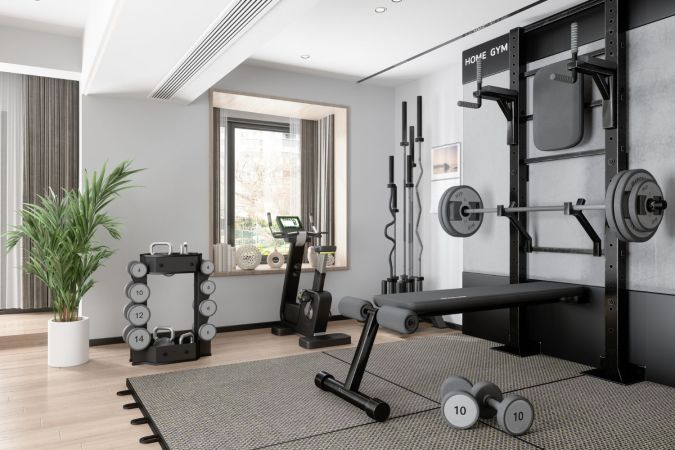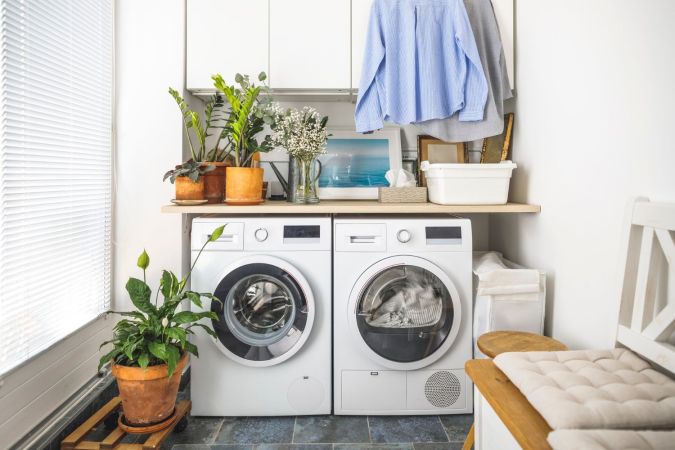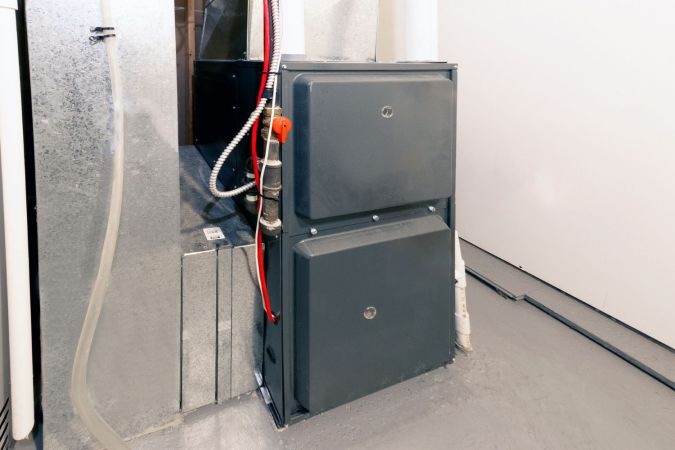We may earn revenue from the products available on this page and participate in affiliate programs. Learn More ›
Highlights
- The average cost range to add a bathroom to a home is$5,000 to $35,000, with many homeowners paying $15,000.
- The final cost will be determined by the bathroom type and location, the size of the room, the features chosen, and the cost of labor.
- Adding a bathroom to a home can help accommodate guests or a growing family, provide privacy, and increase the home’s value.
- A minor bathroom renovation can often be handled by a handy and DIY-inclined homeowner, but a bigger bathroom addition project will benefit from a professional contractor.
Adding a bathroom to a home can be expensive, but the additional square footage can significantly increase its value. The percentage of recovered costs on most bathroom additions is around 54 percent.
It helps to keep in mind that not all returns are monetary. Homeowners who add a bathroom to their home’s layout enjoy more privacy and comfort. Adding a bathroom may also make their living situation safer and help to utilize unused or underused space. Entertaining overnight guests may be easier as well.
According to Angi and HomeAdvisor, the cost to add a bathroom ranges from $5,000 to $35,000, with a national average of $15,000. Several factors influence the cost of adding a bathroom, such as a bathroom’s type, location, and features. This guide will cover these factors in more detail along with the benefits of such an addition, and it will also help homeowners learn how to calculate the cost of adding a bathroom as well as ways to save money throughout the course of the project.
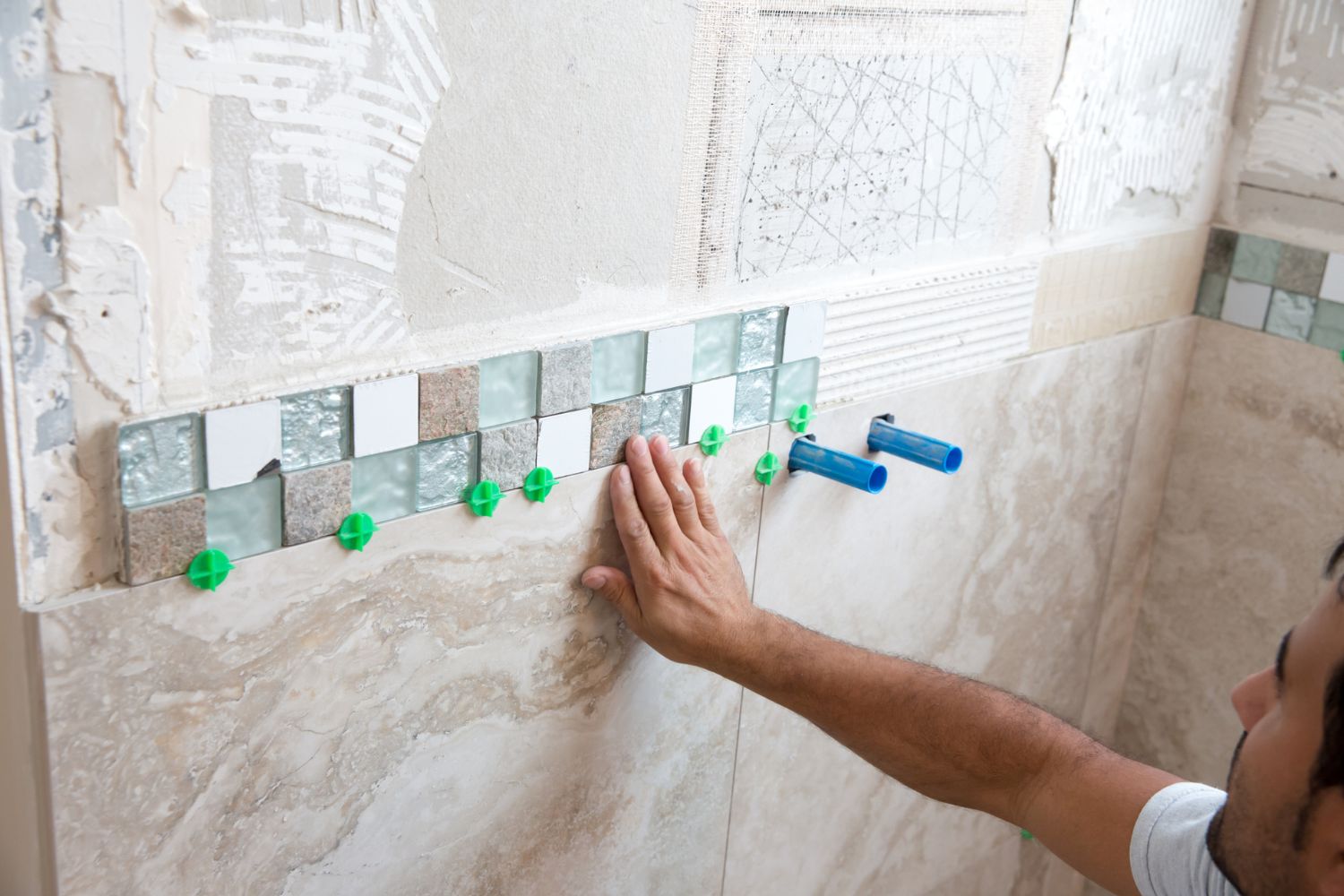
Factors in Calculating the Cost to Add a Bathroom
Bathroom addition cost depends on several factors, including the type of bathroom being added, its location within a home, the size of the space, and the features being considered. Homeowners will want to consider all of the following factors when estimating the cost to add a bathroom to their home.
Bathroom Type
There are many different types of bathrooms, all with unique characteristics and price points. When estimating the cost to add a bathroom, a homeowner will want to consider the type of installation or conversion. For example, half baths and powder rooms cost between $5,000 and $15,000. A ¾ bathroom or small bathroom costs between $5,000 and $18,000.
Full baths, guest baths, and mobile home bathrooms all have a price range of $7,000 to $30,000. Wet rooms have a slightly higher price range, with average costs falling between $10,500 and $32,500. Jack and Jill bathrooms cost between $14,000 and $54,000, depending on their size and installation location and type.
Finally, master (or primary) bathrooms and high-end designs have the highest price ranges. Primary bathrooms cost between $20,000 and $96,000, while high-end bathroom fitting costs between $40,000 and an astounding $192,000.
Bathroom Location
The cost to add a bathroom depends partly on where the new bathroom will be located. Converting an existing space usually costs less than building a new addition with a bathroom, but not every area in a home has the same building costs. The following table lists the cost to add a bathroom depending on the location within the home.
| Location in a Home | Average Cost to Add a Bathroom |
| Attic | $8,000 to $20,000 |
| Basement | $20,000 to $30,000 |
| Bedroom | $14,000 to $40,000 |
| Closet | $3,000 to $7,500 |
| Garage | $15,000 to $30,000 |
| Home addition | $14,000 to $96,000 |
| Laundry room | $7,200 to $9,800 |
| Under the stairs | $3,000 to $7,500 |
| Upstairs | $7,000 to $12,500 |
For example, both a closet conversion and a bathroom built under a staircase have a modest price range of $3,000 to $7,500. A laundry room bathroom conversion costs a bit more, with a price range between $7,200 and $9,800.
Attic bathrooms can cost as much as $20,000, while garage bathroom installations cost between $15,000 and $30,000. The cost to finish basement bathrooms falls between $20,000 and $30,000. If a homeowner is building a brand-new addition to house a new bathroom, costs start at $14,000 and can go as high as $96,000.
Bathroom Features
Not all bathrooms have the same features. Some are quite basic, with a toilet and sink, while others feature double vanities, spa tubs, bonus storage, and modern faucets. Generally speaking, a bathroom with more features will cost more than one with only the basic amenities. More modern or high-end features also cost more than standard models.
| Bathroom Feature | Cost |
| Shelving | $25 to $50 |
| Faucets | $225 to $475 |
| Linen tower | $500 to $2,000 |
| Toilet | $350 to $3,500 |
| Tub or shower | $3,000 to $7,000 |
| Walk-in tub | $4,000 to $20,000 |
Shelving is an affordable feature, costing between $25 and $50. Faucets can be simple or modern and have a price range of $225 to $475. A linen tower is a desirable storage feature and costs between $500 and $2,000.
And of course, a bathroom isn’t a bathroom without a toilet. Toilets can be super simplistic or high-end. Homeowners can expect to pay anywhere from $350 to $3,500 for a toilet. Tubs and showers are additional features with a wide price range; depending on the size, model, and material, a tub or shower costs between $3,000 and $7,000. A walk-in tub costs between $4,000 and $20,000.
Room Size
The size of a bathroom greatly influences its final installation cost. As one might expect, larger bathrooms cost more to install than smaller ones. When trying to determine the average cost to add a bathroom by size, homeowners will typically go by square footage.
The average cost per square foot is $200 to $300. This is for a standard bathroom addition, though. Once the design crosses into a more luxurious and upscale feel, homeowners can expect to pay between $450 and $600 per square foot.
When it comes to bigger bathrooms, homeowners may want to choose more affordable materials to stay within their budget. For smaller bathrooms, it may be easier to install high-end vanities and features without exceeding an estimated budget.
Labor
Labor costs heavily influence the total price of adding a bathroom. Different types of contractors and different jobs have unique labor fees, making it difficult to provide a one-size-fits-all labor quote, but there are a few numbers homeowners will want to know. The labor costs for different bathroom addition projects are listed in the following table.
| Project | Labor cost |
| Basic tub setup | $90 |
| Sewer-ejector system installation | $720 to $1,350 |
| Vanity installation | $45 per hour |
| Whirlpool tub setup | $145 |
When estimating basement bathroom costs, homeowners can expect to pay between $720 and $1,350 in labor fees to set up a new sewage-ejector system to move wastewater up and away from the basement area. Labor costs for setting up a tub are approximately $90, while setting and fastening a whirlpool tub add $145 in labor costs to a project budget. Labor costs for vanity installation start at $45 an hour. Both plumbers and electricians charge anywhere from $85 to $120 an hour for labor only.
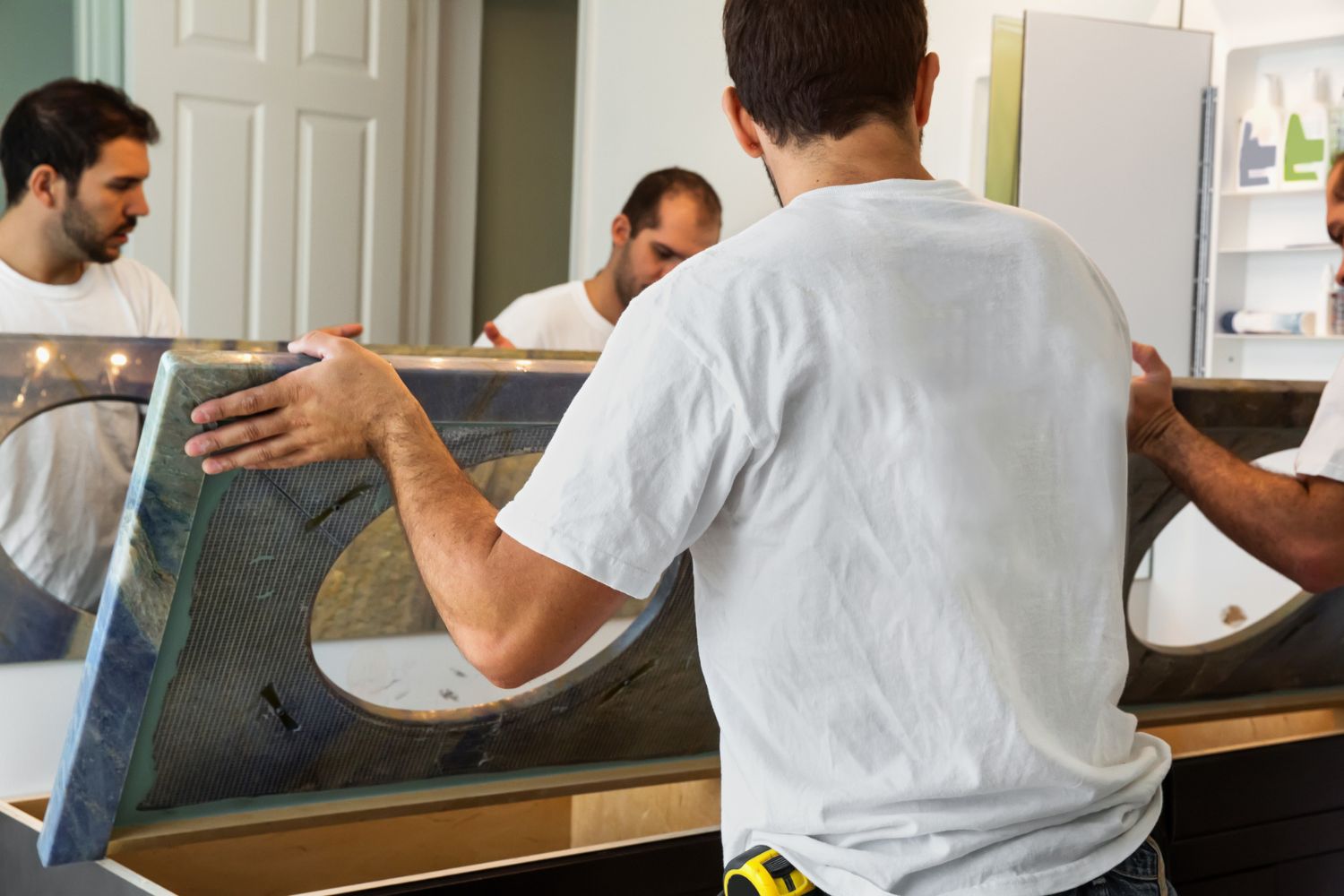
Additional Costs and Considerations
While not a factor in every bathroom addition project, there are some potential costs to consider when homeowners are estimating a bathroom construction budget. Being aware of the following factors will help prevent surprise costs and delays in a project’s timeline.
Home Addition vs. Existing Space Utilization
While there are additional factors to consider while homeowners are deciding whether to add on or use an existing space, such as size and materials, from a construction standpoint it’s generally more affordable to remodel an existing space into a new bathroom compared to building a new bathroom addition. It’s possible to spend as little as $2,500 to create a bathroom in an existing space, though the average price is around $7,600. A new bathroom built as part of an addition is more likely to be $20,000 or more.
The difference in price between building an addition and using existing space comes down to the costs of adding a foundation, framing, siding, and roofing. The following are some additional projects and their costs.
| Project | Cost Per Square Foot |
| Extending a foundation | $6 to $12 per square foot |
| Framing | $9 to $18 per square foot |
| Roofing | $2 to $3 per square foot |
Using space that’s already available eliminates these costs.
Plumbing and Electrical Work
Bathrooms require plumbing and electrical work to be functional. Whenever possible, homeowners are advised to choose a spot for a bathroom conversion or addition that’s near existing plumbing and electrical work. This can shave quite a bit off the budget, as contractors can tap into these existing systems much more easily than installing the systems from scratch.
Nearly every bathroom will require a little plumbing and electrical work, though. Homeowners should expect to pay between $3 and $5 per square foot for plumbing and between $3 and $5 per linear foot for electrical. Generally speaking, the farther a new bathroom is from existing systems, the more of the budget will need to be reserved for these costs.
Customizations
There are several different ways customization can be built into a bathroom. Custom-built vanities are one example. Custom tile designs are another common customization that can be installed on the floor, walls, or shower walls. Some homeowners maximize their bathroom’s storage potential with custom linen closets. Artwork, faucets, and vanities can also have custom touches.
Generally speaking, customizations always cost more than builder-grade materials and designs, as customized bathroom elements take more time to design and install. To prevent going over budget, homeowners will want to ask for specific quotes when considering customized elements.
Planning and Drawing
Not every bathroom installation requires planning and drawing. Most conversion projects, like turning a closet into a bathroom, do not require construction drawings. But for bathroom additions, construction plans are typically required, which pushes the cost to add a bathroom above the cost to renovate a bathroom.
Planning and drawing show what a bathroom addition will look like upon completion and help a homeowner determine a budget. They can be expensive, sometimes costing as much as 17 percent of a total bathroom installation budget. On average, a homeowner can expect to pay between $800 and $1,200 for these services. While pricey, planning and drawing can help avoid costly mistakes as the project moves forward.
Types of Bathroom Additions
The type of bathroom being installed dictates some costs. For example, a powder room is likely to cost less than a master bathroom. While square footage and features are important factors to consider when homeowners are determining a budget, the bathroom type can also help with cost estimation.
| Bathroom Type | Cost |
| Half bath or powder room | $5,000 to $30,000 |
| Three-quarter bathroom | $5,000 to $18,000 |
| Small bathroom | $5,000 to $18,000 |
| Full bathroom | $7,000 to $30,000 |
| Mobile home bathroom | $7,000 to $30,000 |
| Guest bathroom | $7,000 to $30,000 |
| Wet room | $10,500 to $32,500 |
| Jack and Jill bathroom | $14,000 to $54,000 |
| Master bathroom | $20,000 to $96,000 |
| Luxury bathroom | $40,000 to $192,000 |
Half Bath
A half bath is a small bathroom with only a toilet and sink. The average half bath measures between 15 and 20 square feet. Their compact size makes them ideal for closet conversions or under-the-stair installations. They’re considered a micro addition when built onto a house.
Since sink and toilet installation cost is relatively low, the cost to add a half bath to an existing space is between $5,000 and $15,000. If a homeowner is installing it as an addition to the home, adding a half bath costs between $10,000 and $30,000. Half baths are typically on the smaller side, so it’s often easier for homeowners to splurge on high-end materials without going over budget. And without the cost of a bathtub replacement or shower addition to factor in, homeowners can expect a half bath to serve as a bathroom on a budget.
Powder Room
A powder room is similar in size and function to a half bath but more formal in design. They are usually installed near a foyer or other spaces in the home open to guests. Powder rooms offer all the basic restroom amenities in a convenient yet private space, such as a toilet and sink. Guests can refresh without entering a home’s more private quarters.
While they’re small in size, powder rooms often offer quite a bit of style. Including high-end finishes and modern elements is easier without going over budget. Homeowners can expect to pay between $5,000 and $15,000 to install a powder room in an existing space in their home or between $10,000 and $30,000 as an addition.
Three-Quarter Bath
As its fraction suggests, a three-quarter bathroom is somewhere between a half bath and a full bath. It’s characterized as a combination of a standing shower, toilet, and sink and is a simple yet useful design perfect for guest bathrooms or as an additional bathroom for a growing family.
With the additional cost of a shower remodel or installation to factor in, three-quarter bathrooms are higher in price than half baths or powder rooms. Since three-quarter bathrooms are typically on the smaller side, measuring between 25 and 30 square feet, they’re often added to existing spaces for a cost between $5,000 and $7,500. If one is built as an addition, homeowners can expect the cost to add a three-quarter bathroom to fall between $10,000 and $18,000.
Small
It’s important not to underestimate the value of a small bathroom. These spaces usually measure between 20 and 35 square feet and house a three-quarter bathroom design. They allow for all the necessities, including bathing, and offer just the right amount of space and storage.
Small bathrooms are often designed around minimalism and accessibility, offering a relaxing experience. If storage is an issue, shelving can offer additional space for toiletries without creating a cluttered appearance. A small bathroom installation in an existing space costs between $5,000 and $7,500, while a small bathroom addition costs between $10,000 and $18,000.
Full
Showers are more efficient than baths, but they make bathing small children difficult, and there’s nothing like soaking in an oversized tub at the end of a long day. A full bathroom offers all four fixtures: shower, bathtub, sink, and toilet.
If the space allows, the installation of a full bathroom offers more value. When full bathrooms are added to existing space, such as for a small bedroom conversion, homeowners can expect to pay between $7,000 and $12,500. New additions start at $14,000 and can cost as much as $30,000. Because full bathrooms contain multiple components, it’s worth shopping around for affordable yet aesthetically pleasing materials.
Mobile Home
Mobile homes often have tight layouts, but that doesn’t mean there isn’t space for an additional bathroom. While some mobile homeowners add a master or guest bath to an existing space, others choose to add a bathroom via a small addition.
A mobile home bathroom can range from 35 to 50 square feet, which means there’s usually plenty of space to add all the desired components. Depending on materials and features, a mobile home bathroom added to an existing space can cost anywhere from $7,000 to $12,500. The bathroom cost for a new addition is typically between $14,000 and $30,000.
Guest
The term “guest bathroom” refers to a bathroom adjacent to a guest bedroom. Guest bathrooms are normally full bathrooms, though three-quarter baths are also a common option. Typically measuring between 35 and 50 square feet, guest bathrooms are ideal for making guests more comfortable and provide an extra bathroom for a growing or larger family when guests are not present.
Guest bathrooms are often converted from an existing area, like a small neighboring bedroom. Other times, guest bathrooms are part of a guest suite addition. When adding a guest bathroom to an existing space, homeowners can expect to pay between $7,000 and $12,500; while guest bathroom additions range in cost from $14,000 to $30,000.
Wet Room
Wet room bathrooms are totally waterproof. They feature a shower area at the same level as the rest of the floor. Water drains directly through a drain within the shower area, and the walls and remaining floor area are sealed by a waterproof membrane.
Wet rooms are easy to clean and provide great accessibility. They’re also easily customizable and provide high aesthetic value, and they can increase the value of a home. Converting an existing space into a wet room costs between $10,500 and $17,500. When built as an addition, a wet room costs between $15,750 and $32,500.
Jack and Jill
A Jack and Jill bathroom is a full-sized bathroom, usually measuring between 70 and 90 square feet, built between two bedrooms. The space is accessible by both bedrooms, so it has at least two doors. This creates two bedroom and bathroom suites for the price of one bathroom.
Jack and Jill bathrooms can be locked from either side, so privacy isn’t an issue. For optimal functionality, it’s recommended that a Jack and Jill bathroom have two vanity sinks. Homeowners will want to choose materials carefully to avoid going over budget. A Jack and Jill bathroom installed in existing space within a home will cost between $14,000 and $22,500. Adding one as part of an addition tends to have a price tag between $28,000 and $54,000.
Master
A master, or primary, bathroom is typically the largest bathroom in a home, measuring between 100 and 160 square feet. They tend to be full bathrooms with a toilet, double vanities, a standalone shower, and a soaking tub, and they often feature additional features and customizations. If ever there was a bathroom space to splurge in, the primary bath is it.
Adding a primary bathroom to an existing space, like a neighboring bedroom or study, costs between $20,000 and $40,000. Bathroom fitting costs as an addition can get pricey, with a typical installation price range of $40,000 to $96,000. However, updated primary bathrooms are great for resale and vastly improve comfort and convenience for a homeowner.
Luxury
Luxury bathrooms bring the spa home. These spaces have all the bells and whistles, including the following:
- jetted tub
- smart shower
- heated radiant flooring
- heated towel rack
- fireplace
- sauna
- water closet
Luxury bathrooms also feature materials like marble floors and granite vanity countertops, and they’re typically quite large, measuring between 100 and 160 feet. With so much space, additional amenities, and high-end materials, it should come as no surprise that luxury bathrooms have price tags to match. Adding a luxury bathroom to an existing space costs between $40,000 and $80,000, while adding a new luxury bathroom addition starts at $80,000 and can cost as much as $192,000.
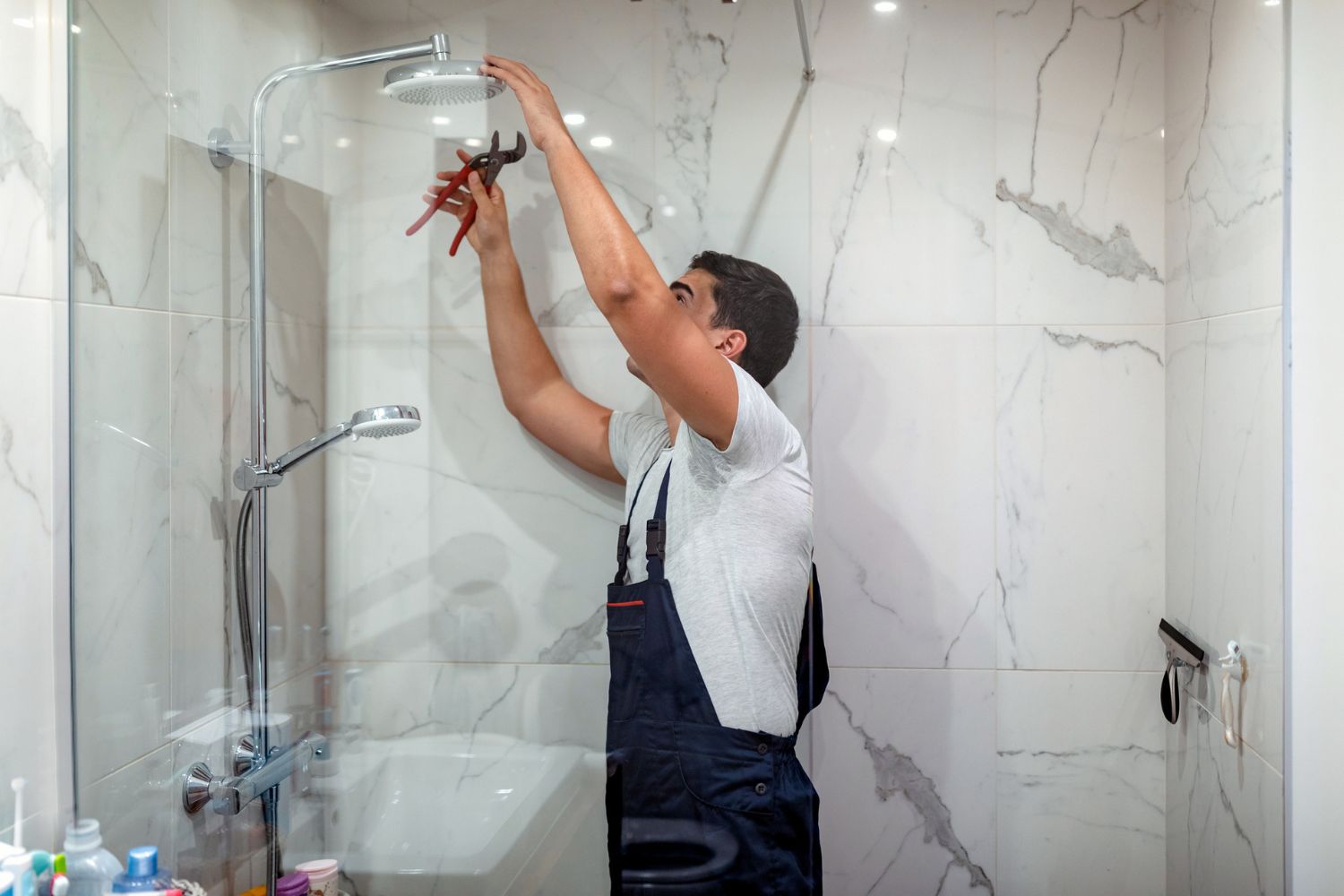
Benefits of Adding a Bathroom
Bathroom additions are valuable home improvement projects that offer homeowners and their families multiple benefits. Homeowners will want to consider the following aspects when weighing the pros and cons of an estimated cost to build a bathroom.
Accommodation of Family Growth
One or even two bathrooms may be enough for a young family, but as children grow in number and age, adding another bathroom can make life easier for everyone. Larger families may find themselves waiting in line for the hall bathroom, and adding another bathroom will speed up morning routines so everyone can get out the door on time. Having an additional bathroom space also makes it easier for everyone to get ready for bed at the end of the day, preventing late-night squabbles and frustration at bedtime. The larger a family, the more bathrooms they will ideally have. Adding a bathroom is one of the best ways to ensure daily routines and needs are met as families grow.
Easier Accommodation of Guests
Adding a bathroom also makes it easier to accommodate guests. Homeowners generally want their guests to feel welcome and comfortable, whether staying for one night or several weeks. Having enough bathrooms in a home means that a guest can have their own dedicated space without throwing off a household’s routine.
If space allows, installing an en-suite bathroom in a guest bedroom will provide the best layout and accommodations. But if this isn’t an option, a bathroom can be installed near a guest bedroom to make middle-of-the-night bathroom trips and daily showers as convenient as possible. If a home’s layout already has a bathroom near a guest’s sleeping quarters, a homeowner may want to consider adding a primary or master bathroom hidden away from guests. This ensures everyone has their own bathroom space during visits.
Improved Privacy
Finding privacy can be difficult when a home’s only bathroom is in a high-traffic area. This can be inconvenient for family members and uncomfortable for guests. Adding another bathroom to a common area with a bit less traffic means family members and guests still have quick access to a bathroom but with a bit more privacy. This is ideal if a home’s only bathroom is off the kitchen or living room.
Adding an en-suite bathroom is the best approach for homeowners who want additional privacy. A bathroom attached to a bedroom isn’t typically offered to guests. Since guests sometimes snoop through medicine cabinets and drawers or leave a mess behind, adding a private bathroom eliminates these scenarios.
Increased Home Value
The cost to remodel a bathroom is typically offset by an increase in the home’s value. Therefore, it only makes sense that adding a new bathroom would do the same. Some of the most common bathroom additions can increase home value as follows:
- Adding a half bath can increase home value by 10 percent.
- Adding a full bath can increase home value by 15 percent to 25 percent.
In general, a home with two or more bathrooms will have a higher demand and selling price than a home with a single bathroom. Therefore, it’s a smart move for a homeowner to add a bathroom if their home has only one. Bathroom additions have a relatively high return on investment of 60 percent to 70 percent, which can help offset the cost to add a bathroom when it comes time to sell.
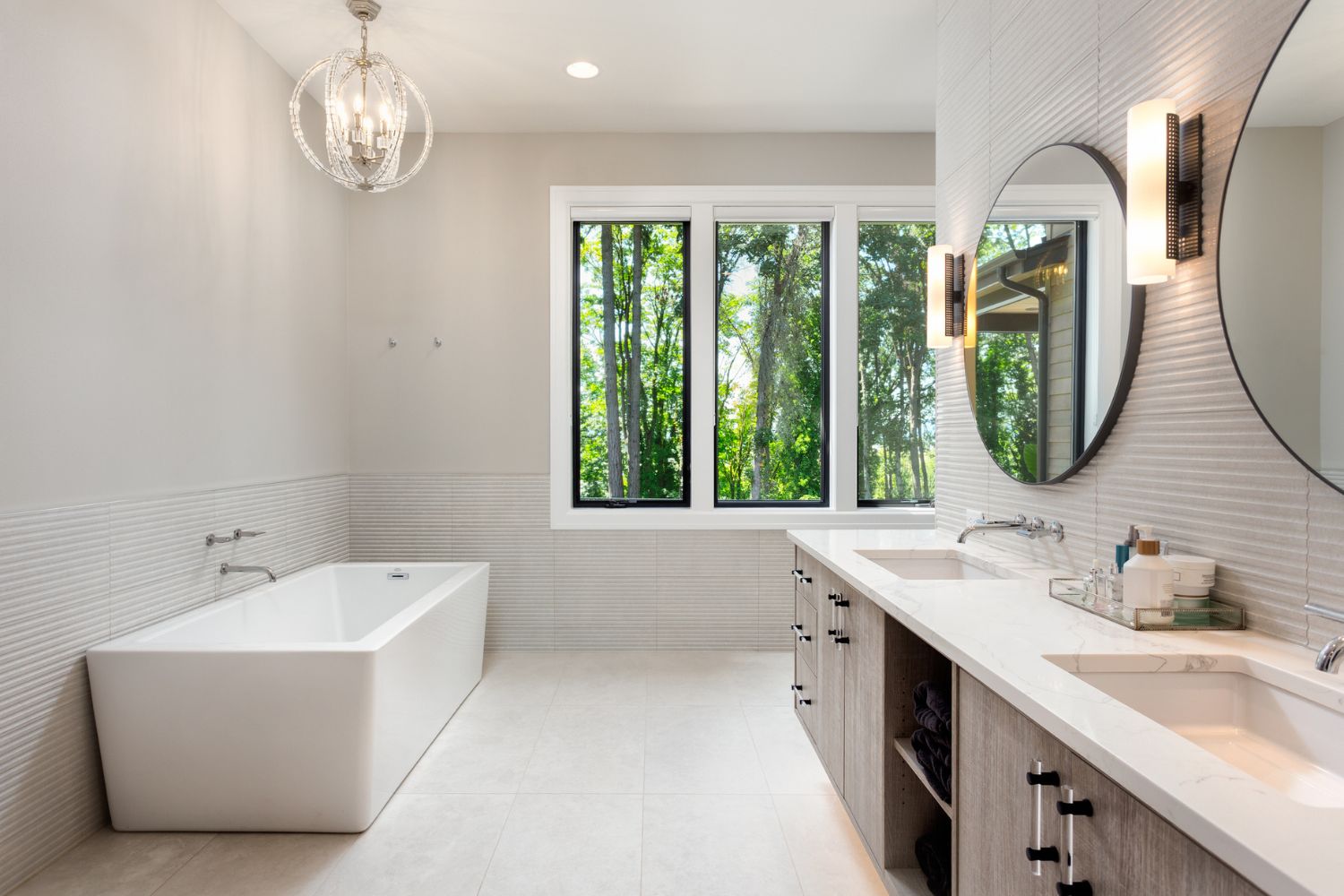
Adding a Bathroom: DIY vs. Hiring a Professional
Is a bathroom installation a good DIY project, or is it best left to the professionals? The answer is likely somewhere in between. While there may be some tasks that a homeowner can easily and safely take on, other parts of the job will likely need to be handled by a professional.
When trying to save money with a DIY bathroom installation, homeowners may be able to do so with some of the following projects, depending on their level of experience and comfort.
- Painting the bathroom can save between $380 and $800.
- Hanging the bathroom mirror can save between $150 and $460.
- Installing the bathtub can save between $800 and $3,200.
- Installing the toilet can save between $210 and $520.
Homeowners can also save on faucet and shower installation costs when they go the DIY route, though plumbing is a skill that requires years of experience to get right. In fact, nearly every step of a bathroom installation can benefit from the experience of a professional.
There are several benefits to working with a professional painter, plumber, electrician, or contractor during a new bathroom installation. First, a professional brings years of experience to a job site. This experience can help spot problems before they cost a homeowner time or money. This same experience offers another benefit: Professionals are less likely to injure themselves or another person when working through the steps of a bathroom installation. Without experience, a DIY homeowner risks serious injury. Finally, professionals can make smart recommendations on layout, materials, or features while keeping a project’s budget in mind. They can also ensure a project stays on track without compromising quality.
How to Save Money on the Cost to Add a Bathroom
Bathroom installation costs can quickly grow out of control, but there are plenty of budget bathroom remodel ideas out there, as well as ways to reduce bathroom renovation costs and help homeowners stick to a budget when adding a new bathroom or remodeling an existing one. The following are some simple ways to save money on the cost to add a bathroom to a house.
- Have a plan in place. Rather than choosing materials as you go, plan out every detail in advance. This allows time to shop for more affordable materials and prevents surprise costs.
- Get creative with materials. Consider a variety of material sources and types. For example, shopping at a big-box store can offer more savings than shopping at a luxury tile boutique. You may also consider less expensive materials to stretch your budget, such as a composite shower instead of a tiled design.
- Consider location. Adding a bathroom in an area with simple access to plumbing and electrical work can shave a large chunk of cash off a bathroom installation project. If you’re considering more than one location, opt for the one that offers proximity to existing systems.
- Add value where it matters. While many homeowners add new bathrooms for their own convenience, there’s also resale value to consider. Add style and personality, but keep potential future buyers in mind to ensure the best return on investment. For example, spending more on aesthetic lighting may be a better investment than focusing on an overly unique tile job that might not fit someone else’s aesthetic.
Questions to Ask About Adding a Bathroom
Adding a bathroom isn’t a simple home improvement project. With several contractors involved, homeowners will want to ask a variety of questions before, during, and after the project. The following are a few to keep in mind.
- How many years of experience do you have?
- What do you specialize in?
- Are you licensed and insured?
- Can I see examples of your past work?
- Can you provide me with a list of references?
- Do you complete the work yourself, with a team of employees, or through a subcontractor?
- Do I need permits or inspections, and if so, do you pull the permits and schedule the inspections for me?
- How soon can my project start?
- How long do you expect the project to take?
- Do I need to be present during construction?
- Do I need to do any prep work before the job can begin?
- How many people can I expect there to be in my home?
- How do you address potential delays in the project?
- Can you provide me with a daily schedule, so I know when to expect workers to start and stop construction?
- What do you require for a down payment, and what is your preferred payment schedule?
- How will we communicate throughout the project?
- Do you offer any warranties or guarantees on your materials or workmanship?
- How can I reach you in the future if needed?
FAQs
Adding a bathroom makes a home more functional and valuable. Costs vary greatly, with the size of the space and types of materials heavily influencing the final installation price. For homeowners not sure about whether the cost to add a bathroom is worth it, the following questions and answers may offer additional clarity.
Q. What is better: an upstairs or downstairs bathroom?
When considering the cost to add a bathroom upstairs, homeowners will want to bear in mind that an upstairs bathroom tends to offer more convenience and fewer disadvantages. For example, a downstairs bathroom can make middle-of-the-night visits an inconvenience, unless there are bedrooms on the main floor. Using a downstairs bathroom can also be difficult for homeowners when guests are over. Finally, an upstairs bathroom can offer a secluded, relaxing space to unwind compared to a downstairs bathroom sandwiched between busy living areas.
Q. Should I go with a full or a half bath?
The answer depends on the size of the home and the number of people who live in it. A full bath contains a shower, bathtub, sink, and toilet; a half bathroom contains only a sink and toilet. A half bath is ideal for hallways or areas off of living spaces but rarely as a home’s main bathroom. A full bath is an ideal choice near a bedroom. Larger homes and larger families can greatly benefit from additional full bathrooms.
Q. Can I add a bathroom anywhere in the house?
A bathroom can be added almost anywhere in a house. However, the placement of a bathroom should be strategic. Location, space, and the existing plumbing and electrical setups should all be considered. Choosing a space that’s too small can be problematic, and the costs of running plumbing and electrical work to certain locations can add up quickly.
Q. Do I need a permit to add a bathroom?
A permit is necessary when homeowners are adding a new bathroom or making significant changes to an existing one. This includes adding a window or changing the existing layout. However, a permit is not required for cosmetic changes, such as switching out a beige sink for a white style or replacing floor tiles.
Q. Do I need to hire a contractor to add a bathroom?
No, hiring a contractor to add a bathroom is not necessary. However, having a general contractor involved somewhere in the process of hiring subcontractors for more difficult or technical parts of the project can ensure a bathroom installation runs smoothly. Some tasks, such as positioning a toilet or installing a double vanity, may be easier to take on with a small team.
Q. How much does it cost to convert a closet to a bathroom?
It costs between $3,000 and $7,500 to convert a closet to a bathroom. The majority of closet conversions are half bathrooms or powder rooms with about 15 or 20 square feet. Larger closet-to-bathroom conversions may cost more but should still fall within an affordable price range, since there is no shower installation cost and flooring can be left as is.
Sources: Angi, HomeAdvisor, Fixr, HomeGuide
